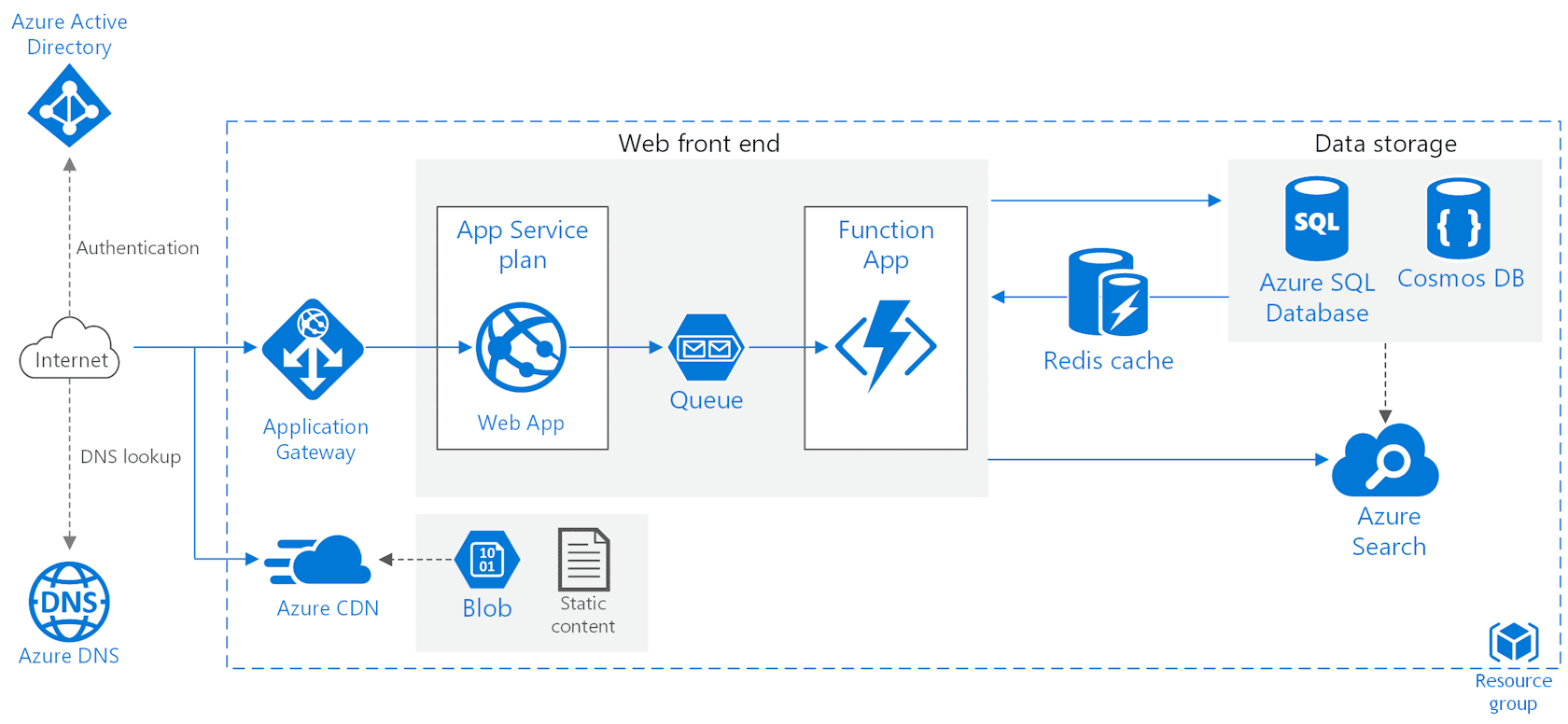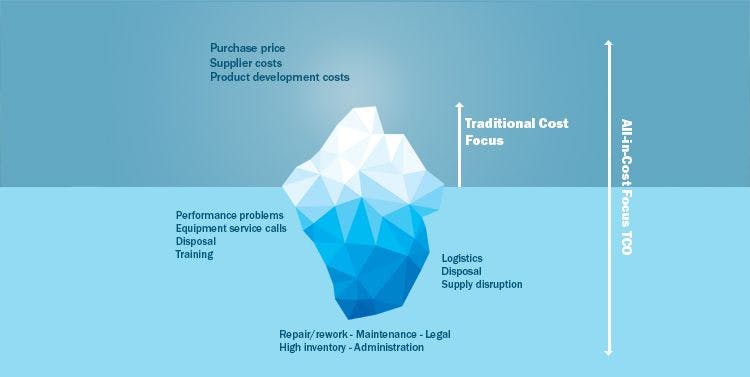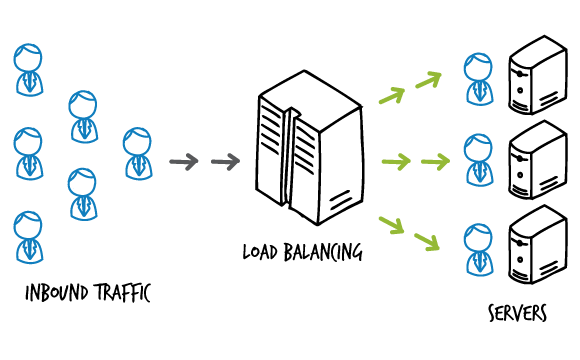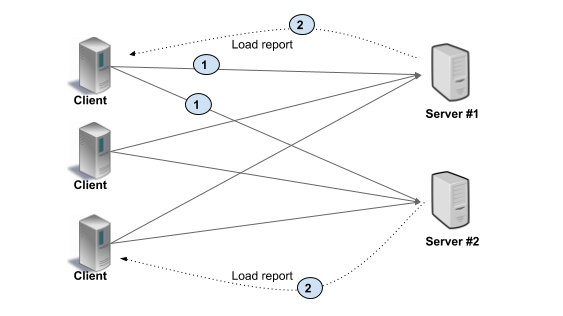
Building Scalable Web Application for Your Project: Best Principles and Practices
A big part of developing a web app is its capacity to scale. No matter what kind of project you are aiming to launch, you have to be ready for the influx of users and expect the system to handle it. Be extra vigilant because there might be a time when your system is not flexible enough and cannot support a heavy load. To prevent this, it is critical to get started on application scalability before the development step comes in.
This article guides how to create scalable web applications that can process a huge data stream without unexpected breakdowns. So let’s move further to discover the details of this process and delve into the guide to building a scalable web application.
SCALABLE WEB APPLICATION: DEFINITION
Let's start with the first steps to create a scalable web application.
In simple terms, scalability is the ability of your web application to cope with an increasing number of users concurrently interacting with the app. Consequently, a scalable web application is one that performs equally well with one or a thousand users and stands ups and downs of the traffic.

When it comes to the factors that influence scalability in web applications, it is important to allocate the following:
- Scalable app architecture with clean-code design plays a key role in building scalable web applications. The framework has an impact on the application performance (choose one that works best for you).
- Load test helps to locate and overcome weak sides of your application in order to guarantee its smooth performance.
- Hardware can successfully influence scalability only if it is thoughtfully chosen.
- Third-party services should also be carefully selected, otherwise, they might cause operational failure.
TYPES OF SCALABILITY IN SEVERAL DIMENSIONS
When searching online for the definition of scalability types, you will find that there’s no single certain term for it. Some consider scalability in terms of separating cloud computing with horizontal, vertical, and diagonal scaling principles, where:
- horizontal scaling allows adding more machines to your server;
- vertical scaling allows adding more power to your machine;
- diagonal scaling allows combining two of the above-mentioned types.
Others pay attention to the flexibility and scalability of the cloud service. Everyone defines scalability differently, but below you can find its types in terms of performance, maintenance, and expenditures dimensions.
SCALABILITY OF EXPENDITURES
It’s all about the process of web design and TCO (Total Cost of Ownership) including the actual costs of scalable web applications development, maintenance, and operation. When building a system, it is crucial to keep a balance between leveraging the existing parts and developing the entire application independently. Even though the existing parts may not fully comply with the requirements designed to fit them, using them is still cheaper than developing a unique design from scratch.

The common web design technologies are used for development in order to simplify the search for an expert in the future when publishing your solution as an open-source will give you access to the community members that could make a great addition to the team.
Revealing community experts — with years of experience and an impressive portfolio — can bring considerable contributions to the project. This is especially important when you build scalable web applications.
SCALABILITY OF MAINTENANCE
It is not enough just to write software or start a server. Both of them require regular maintenance and management. To ensure the maintenance of both software and server, we can use platforms and tools that facilitate the tracking of the application, allow applying updates when needed, and ensuring the efficient work of the app.
SCALABILITY DESIGN PRINCIPLES
So, how to develop scalable web app? As long as many of the existing types overlap and even sometimes conflict with each other, their presence is crucial for the design process, and they should always coexist in balance. Since these types are directly linked to design principles we will assort them in details below.
- Choose a horizontal scale over a vertical one. You might find that the system is limited to scale horizontally sometimes. Yet, these limits regularly extend databases in the same direction. Besides, with a horizontal scale, you can just add another server rather than upgrade the existing one. It will save you some money.
- Take work away from the core. The number of clients will exceed the number of available services you have. So, to avoid any kind of bottlenecks while scaling the application up, distribute as much work as you can away from the core.
- API first. Prior to showing clients the updates, think of the web application as of API service. Smartphone applications, websites with JS, and desktop apps are well-known because clients connect to API today. As the latter doesn’t distinguish the clients, it can keep serving any of them.
- Make sure to cache everything. As cache stores data that enables the future query to be served faster, they significantly improve performance and scalability of web applications.
- Design for maintenance and process automation. If you want the system to work efficiently every day, you have to monitor it and provide regular updates. Spending time and efforts on maintaining the app ensures smooth performance.
- Choose asynchronism. The asynchronous method plays a significant role in communication between the client and server and it has to be implemented into a web application. For example, once the users submit a request, we can inform them about a successful deal and provide updates while the query is being processed.
- Aim for statelessness in your app. Statelessness is especially relevant for the distributed architecture that supports horizontal scalability. As long as the components remain stateless, they can easily be redistributed in case of breakdown and scaled to adapt to changes in load.
SCALABILITY VS FAULT-TOLERANCE
When it comes to scalability approaches, people sometimes think that adding the second server may avoid system break. You can divide the database into two parts and put on two ceparate servers for effective scalability. In this certain case, the crash of one part will lead to the failure of a whole system. So, this approach is not that robust which is now always obvious.
That is why make sure to follow the next principles:
- Prevent SPOF (Single Point of Failure). Having a fallback may be challenging and costly. However, we gain better records of the availability and performance under the load. Once you decide to scale your database, it’s a perfect time to introduce sharing to your app architecture.
- Don’t rule out failure. The computer systems, software, hardware, and designs are not insured against breakdown. Be ready for it and ascertain that individuals users don’t even have a clue.
HOW TO ESTABLISH SCALABLE WEB APPLICATIONS
With all that being said, it is clear that scalability is important for any web project — either it is a startup or an existing web app. A scalable website can easily handle a heavy workload, keep response time constant, simplify server maintenance, and decrease operational costs. Overall, it may bring numerous advantages for business and, therefore, becomes vital.
Further, we’ll discuss how to build scalable web applications. But, first, we’ll take a quick look at the standard architecture of any web app.
COMPONENTS OF A WEB APP’S STANDARD ARCHITECTURE
The standard architecture brings many advantages for development because it ensures simple navigation between files and better flexibility of the system for subsequent scaling.
Further, we’ll discuss how to build scalable web applications. But first, let’s start with the fundamental components of a standard one.
- The front-end part of an application is in direct interaction with the user. Sometimes users perform too many actions at once and the front-end lags; in this case, you need to split up the app into pages and use a virtual scroll. But most of the issues that users see on the front-and side of things are caused by the back-end.
- The back-end is not accessed by users, but it reflects in every single step a user makes on the front-end. The back-end is just what significantly influences the performance of the application.
- The database is for data collection and storage. It can be easily accessed, managed, and updated from the computer system.
If you create a project with a scalable web application architecture, ensure correct scaling of all the available components. Moreover, it’s crucial to use the technology stack that will definitely enhance the performance of the web app.
SCALING THE DATABASE
Since the database may have an enormous data volume and load a separate server, it also needs scaling. It can be supported by implementing the distribution of computing processes and indexes. Let’s focus on these two configurations now.
DISTRIBUTION OF COMPUTING PROCESSES
This function decreases server load by splitting complex calculation process in the database. In that case, each server receives a complete database copy to handle a certain part of the work.
Even though this is a difficult task, there are still a few ways to complete it.
- Database sharding enables adding part of the data to each server. For instance, each server stores data of only a part of the users, hence all requests from a user go to one server only. With an increase in the number of users, you can add more servers. You can also distribute data between servers by date.
- Replication ensures a full copy of the database on each of the servers, so each client has can read from any server. This allows for greater performance, but only provided that the data fits on a single server.
In case of heavy load and lots of data, one can use a combination of the mentioned methods.
INDEXES
Having considered the term of indexing in the database, we’ve come to the conclusion that database performance optimization is achieved by minimizing the number of disk accesses when processing the request. By applying indexation, one can immediately insert the needed details in the dataset even if they are allocated between different physical drives.
SCALING BACK-END
Even if your project has a solid and reliable back-end, it doesn’t mean the load will never grow. If for some reason you experience continuous load growth resulting in unstable operation, it’s the right time to take care of scaling the back-end part of your application. This is where the principle of dividing queries between servers comes in.
When applying it to the web app, you have to send some scenarios and modules to the second server and equally allocate queries between the computers. By doing so, you can take the load off from the main hardware and redirect it to the other server.
BALANCING NODE
Balancing node uses distributing devices to make the application scalable and protect the back-end from overloading. If the number of queries keeps growing, the balancers allocate connections to nodes. The more nodes you add, the better the service performs.

BALANCING ON THE CLIENT SIDE
As long as there is a server-side balancing, involve a client-side balancing as well. In that case, the load balancers disappear and the clients get an opportunity to select the server to connect. You might expect improved latency and scalability but you have to pay for added complexity.

WHAT IS THE COST OF BUILDING SCALABLE WEB APPLICATIONS
Cost control for scalable applications depends on many factors. The size of the company directly affects the choice of cost strategy.
Small Startups
For small start-up companies, it will be more profitable to use cloud services with pay-as-you-go use, rather than buying and maintaining their own equipment, as well as hiring and training a team of administrators.
Large Businesses
As the system grows and the user load grows, it is often important for larger companies to maintain critical infrastructure and full control over data within the company. Therefore, it is often more profitable for companies to maintain their own servers both in terms of costs and in terms of security.
In both cases, it is important to have tools for cost analytics and a team of specialists who will monitor the use of resources by the system and make recommendations for cost optimization.
HIGHLY SCALABLE APPS: WELL-KNOWN EXAMPLES
Take a closer look at these famous applications, which initially focused on scalability as one of the key elements. After studying these examples, it will be easier for you to understand the described scalable web app principles.
Slack
The standard among communication tools in the IT industry. Slack uses microservices to provide real-time communications, video calls and screen sharing to tens of millions of daily active users.
Bitly
This is an app that provides link optimization services, that uses microservices architecture to create decentralized structures and isolate component failures to support 20 billion clicks per month.
Dropbox
The popular file-sharing service among customers. This app uses the orchestration service to manage distributed database services across stand-alone clusters to store more than one million files every 15 minutes.
WRAP UP
No matter what project you want to build in your company — a small website or a complex app, scalability is something you should always bear in mind. Even though you’ve just started and can’t boast with high traffic, the number of visitors will gradually increase in proportion as your web project will grow. Scalable web applications can easily handle the increased workload, giving the users stable performance and hassle-free on-site experience. Prepare the server of your web application from the very beginning.
And remember that designing scalable web applications takes time, lots of practice, and has quite a high price. Consult one of Gearheart experts and estimate your resources prior to making any final decisions. In the meantime, we hope our article has helped you understand the basic details of how to make scalable web applications.
Subscribe for the news and updates
FAQ
What is a scalable web application?
What makes a website scalable?
How would you design scalable applications?

